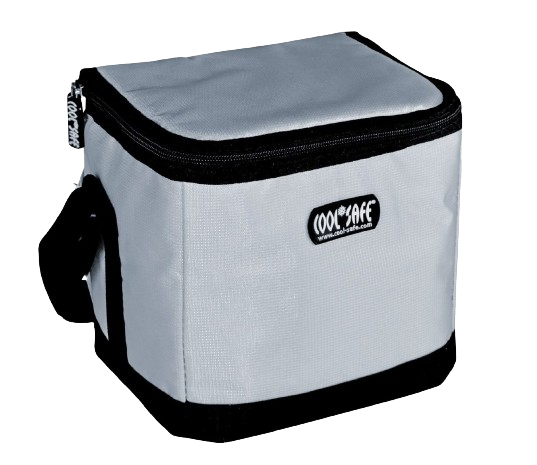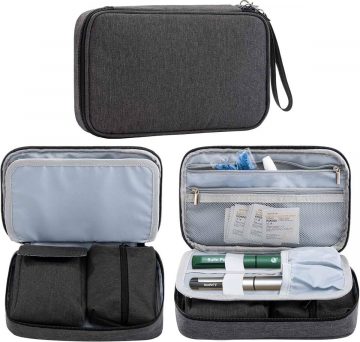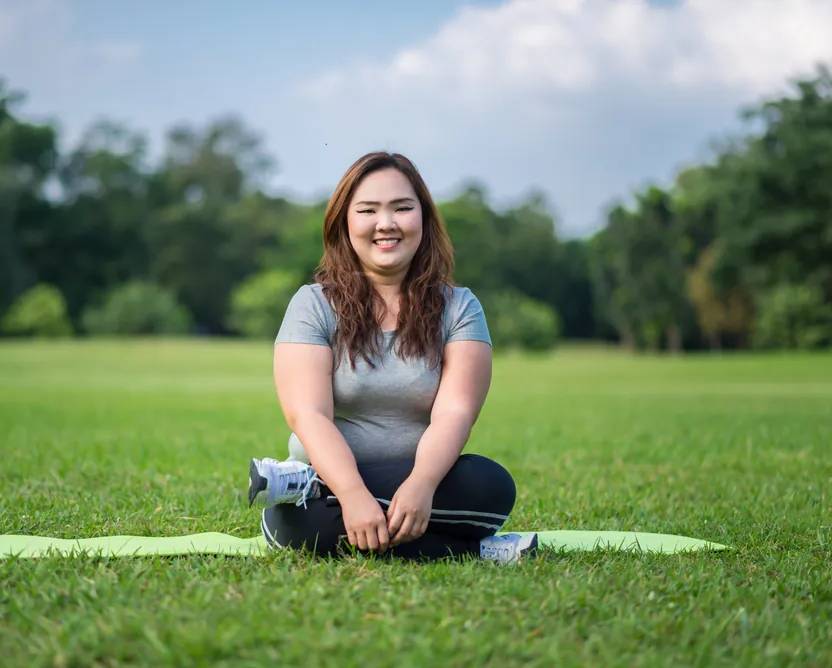Is your medical cooler bag reliable?
We bring transparency: With this fact-based information, you can correctly assess potential risks:
“I’m using a well-known medical cooler bag—how could it be unsafe for my medicines?”
Well, it’s understandable if you feel confident about your cooler bag, especially when being marketed as medicine cooler bag, when you’re unaware that medical cooler bags often do not deliver on their promises.
Unfortunately, many cool bags do not protect your temperature sensitive medicines. Most likely they expose your meds to wrong cooling which often seriously affects how well your medicines work.
So, how can you find the right solution?
Luckily, it’s not rocket science! With the right guidance, you can just easily pick a cool bag that works for your temperature-sensitive medicines. One that does more than just toss around buzzwords like “no freezing” or “keeps cool longer” or “24 hour cooling”.
To be precise, you can only trust a cool bag that truly delivers on its promises just like the certified COOL*SAFE cool bags.
The safe solution:

In this article, we’ll share key facts to help you understand what makes cool bags unreliable and we explain why COOL*SAFE is a dependable choice for safe storage and transport of your medicines.
You need to be aware of these facts because only with the right information, you can make informed decisions for your health.
For us, it’s not just about claims—it’s about protecting your medicine, supporting your health, and ultimately, your peace of mind.
What makes other cool bags risky?
As cold chain specialists, we know that not all medical cool bags live up to their promises. Some may even put your medicines—and your health—at risk.
You’ve likely come across various statements from cool bag manufacturers—all that sound convincing. You will find many cool bags with advertisemant statements like “complete protection against freezing,” “advanced insulation,” and “long-lasting cooling for up to 48-72 hours,” along with “compliance with medical standards” or “for medicine cooling”.
However, many of these promises are more about marketing than actual performance. They often leave you with products that destroy your medicines without you even realizing it. You only will realize it indirectly, when your illness progresses and/or you suffer from avoidable adverse effects due to the medicine’s exposure to wrong cooling.

Example of an unsafe cooler for temperature-sensitive medicines
1. No protection against freezing
When cool bag manufacturers claim that their bags maintain a “2-8°C” (36 – 46 °F) range, this is most often not the case. Even when labels are saying they “protect against freezing”, many just don’t quite live up to that promise.
Weight-loss drugs like Ozempic, Wegovy, and Saxenda specifically warn against freezing temperatures. This is because freezing can leave them ineffective and hinder the progress of your treatment or even cause side effects.
However, when you carry these drugs in other cool bags while trusting their “no freezing” claims, you can unknowingly expose your pens to the wrong cooling. Your medicine becomes ineffective.
How Other Manufacturers “Ensure” Temperatures Stay Above +2°C in Test Reports:
The next question that might come to mind is, “If other medical cooler bags aren’t safe for freezing, how do they even pass testing?” That’s an interesting question—and one we’re pleased to answer that!
Almost all cool bag manufacturers claim their bags keep temperatures above +2°C, but the reality isn’t always so straightforward. Let’s take a closer look at some of the tricks they use to get the desired test result to make the cooler bag appear safe.
During the testing period, the testing device collects data by measuring at a predetermined rhythm or frequency. When measurements are only recorded every 1 or every 10 minutes, it can leave gaps in critical data. When the manufacturer knows that the temperature would fall below 2°C/36 °F at a certain time, then he can set the rhythm for data collecting exactly so that this time is spared. By doing this, the testing device does not measure the time period when the medicine’s temperature is below 2 °C/36 °F. As there is no data recorded between those intervals, it creates the illusion that the temperature stays above 2 °C/36 °F. The bag appears to be safe, although during this time the medicine can get destroyed.
During the tests of COOL*SAFE cool bags data are collected every 10 seconds, so that there is a constant monitoring, without any gaps in critical temperature dropping.
When the manufacturer knows that the medicine will fall below 2 °C/36 °F, then he has to start the testings with warmer ice packs. If the testing starts warmer at e.g. -15°C/+5 °F or -13°C/+8,6 °F instead of the standard -18°C/-0,4 °F, then it might certainly be, that the results do not show that the medicine’s temperature falls below +2 °C/36 °F. Starting the test with 3 to 8 degrees warmer ice packs will give better looking results and give a false “confirmation” that the cool bag is safe. Even though it’s a small difference in temperature, it can have a noticeable impact on the overall findings. The results look good on paper, but in real life the medicine gets destroyed.
You would never put your freezer on a temperature of -13 or -15 °C (+5 or +8.6 °F), because that would spoil your food fast – which is expensive.
COOL*SAFE cool bags undergo a realistic testing. The cold packs are frozen at -18 °C/-0,4 °F, because this is the standard setting of freezer manufacturers.
Another way how manufacturers create a testing condition, that keeps the temperature above +2 °/36 °F is by starting the test with the medicine warmer than +5°C/41 °F. If you start the testing at 8 °C/46 °F, you already added 3 °C/5°F more degrees onto the temperature, which can be displayed in a table as a temperature curve that does not fall below +2 °C/36 °F during the test period. But when you substract these additional degress, is it then still above the needed minimum of +2 °C/36 °F?
This often twists the results, suggesting the cooler bag performs better than it actually does. In reality it would fall below the allowed minimum temperature, so that it can destroy your medicines.
COOL*SAFE cool bags are tested with medicines’ starting temperatures of +5 °C/41 °F (+/- 1 °C), because these 5 °C/41 °F represent the usual default settings of fridge manufacturers. This temperature represents your normal reality of daily life.
If the tests only start at an ambient temperature of +25 °C/77 °F, you do not know whether the temperature will not drop below +2 °C/36 °F at spring-like ambient temperatures of 20 °C, for example. 20 °C is also the usual room temperature during most of the year.
For example, if such a bag is exposed to an environment colder than 25 °C/77 °F, it might not be able to keep the minimum temperature above 2 degrees Celsius (36 °F). The medicine becomes colder, which destroys its molecular structure. The high starting temperature of 25 degrees Celsius (77 °F) for official testing may hide an unwanted test result of the medicine getting colder than the required minimum of +2 °C.
But often a medical cool bag is used at ambient temperatures of less than 25 °C (77 °F), too. This makes such a cool bag risky for the patient’s use.
Some manufactureres simply ignore all the measurement data before they reach +2 °C/36 °F, when it has fallen below that critical point. To make these data not show up in the test report chart, they just do not show all the data before and start the curve only at +2 °C/36 °F.
As you wouldn’t expect that somebody would do that, you would just see that the measuring curve is above +2 °C/36 °F, and you will feel convinced.
All these factors ensure that the temperature appears above +2°C/ 36 °F in the measurement report. However, the underlying methods are not practical in a typical household, such as
- setting the freezer at home to -13°C or
- setting the fridge to an average of 8°C/ 8,6 °F, as this is far too warm, or
- using the cool bag only when the ambient temperature is above 25°C/77 °F. After all, you need to be able to transport your medication safely even when it’s a little cooler outside.
When you read a test report, you should definitely look at all 5 above mentioned factors to see whether they have been applied in the test report you are reading. Even reports from independent test institutes might use these methods!
If even just one of these 5 methods has been used, then it is reasonable to assume that the cooler bag is allowing the medicine to fall below +2 degrees – and so your medicine may be destroyed.

2. False cooling duration claims
The second warning sign for many medical cooler bags is their ambitious cooling time specifications. These claims often do not take into account the influence of the ambient temperature. In warmer weather, the promised cooling times can quickly shrink – they are much shorter than you would expect.
Marketing statements like: “24-hour cooling” or “24-hour ice packs”
This is a very imprecise specification.
- One can assume from this statement that the cold packs remain cold for 24 hours at up to 8 degrees, but this says nothing about how long the medicine remains at this temperature.
- In most cases, the 24-hour cooling duration up to 8 degrees is achieved only because the ice packs previously froze the medicine. This extends in fact the total cooling time, which is then used as a sales argument, it also damages the medicine by allowing it to drop below safe temperatures, reducing its effectiveness.
- The cooling time of the ice pack (not the medicine!) is often calculated at lower ambient temperatures, like 20 °C/68 °F. It may not be sustained in higher temperatures, such as 30 °C/86 °F.
Key take-away 1: Unfortunately, those promises of long-lasting cooling aren’t always as accurate as they seem. If you rely on these claims, especially in hot weather, you may put your medication at risk of getting too warm or too cold and losing its effectiveness.
Key take-away 2: You need a clear indication of how long your medication will keep cold at different ambient temperatures, e.g. at 20°, 30° or 40°C. Ask your medicine manufacturer if they have gifted you a cool bag. This is the only way to assess whether the cooling time of your cool bag is sufficient for your purposes in daily life!
3. Stylish but not secure
Don’t be blinded by some beautifully finished medication cool bags. These usually do not perform safely either! This is why it is so important that you have the test reports presented to you.
Many are tempted by those elegant electrical cool bags.
It sounds great—until you’re on a plane and suddenly, a loud alarm goes off, letting you (and everyone else) know that the battery is dying!
You’re stuck in an awkward spot, aren’t you? This happens more often than you’d think. While many travelers are drawn to promises of 12-hour cooling, the reality is that the batteries frequently give out much earlier, leaving you in a tricky spot.
Almost all cooler bags that you can buy online and also the cooler bags from the pharmacy—whether rented or delivered— fall short of providing the protection your medicines need. Whether it’s a Styrofoam box, an aluminum-coated bag, or any medical cooler bag with ice packs placed beside or above the medicine – your medicine is still at risk in most cases. Even if the ice pack doesn’t touch it directly, your medicine might not stay at the right temperature.
Many of these bags often lack the proper insulation needed to maintain the precise temperature required for your medications, already from the very first minutes of use, because then the freezing already has happened.
Why you can only trust COOL*SAFE cool bags?
No matter whether you’re carrying your medication for a short 15-minute trip or a long journey, COOL*SAFE cooling bags let you transport your medication with peace of mind.
We do not rely on the typical “tricks” mentioned above to keep temperature readings above +2 °C, nor do we make vague or exaggerated claims about cooling duration. COOL*SAFE complies with all required and essential standards, which are regularly tested by independent institutes – without any manipulation.
To clarify the differences between various medical cooling bags on the market, we present a comparison table. It outlines the key features of a typical cooling etui, other common cooling bags, and our safe COOL*SAFE cool bags.
| Etui | Other cooler bag | COOL*SAFE | |
| Amount of pens/syringes | Only max 2, without the package | The complete medicine package | The complete medicine package |
| Danger of getting frozen | Very high | Very high | No danger – your medicine is safe |
| Getting above 8 °C/46 °F | In less than 1 hour | Within a few hours already at 20 °C/68 °F ambient temperature | After more than 17 hours at 20 °C/68 °F ambient temperature |
| Cooling duration | Short | medium | Many hours |
| Probability that your medicine gets destroyed due to wrong cooling | Extremely high | Extremely high | None |

Cooling Duration Details for Our Smallest Model: COOL*SAFE Protect S:
Cooling in the temperature range of +2 to +8°C (36 to 46 °F)
- At an ambient temperature of 20°C/68 °F, the cooling duration is about 17.4 hours.
- At an ambient temperature of 30°C/86 °F, the cooling duration is about 11.25 hours.
- At an ambient temperature of 40°C/104 °F, the cooling duration is about 6.2 hours.
If you want to know the cooling time of our various COOL*SAFE cool bag models, please read the information provided with each model. HERE
Why are these risks hardly known among medical professionals?
It might be surprising, but many health professionals aren’t fully aware of the risks of improper cooling for temperature sensitive medicines. They just know these meds should be kept in the cold chain (between 2 to 8 °C / 36 to 46 °F) or in certified, high-quality cool bags, as advised by package inserts or pharmaceutical reps. However, they might not realize that some commercially available cooler bags can actually make medicines too cold within just a few minutes.
They also may not be aware of the tricks used in the creation of test reports, and therefore cannot warn others about them and may overlook these important details in test reports themselves.
Without specific guidelines in their training, they often rely on marketing claims or recommendations from medical supply sellers. Unfortunately, this means they might not have the full picture of how these products perform in real-world conditions. This reliance can sometimes lead to confusion about which medical cooler bags are safe and effective for keeping medicines at the right temperature.
This leads to statements such as “We’ve always done it this way.” or “We got this bag/box from a pharmaceutical company”.
This lack of knowledge often prevents them from advising patients on how to best protect their medicines. It may also lead to doctors recommending unsafe cooler bags and pharmacies using unsuitable courier bags, which can destroy the effectiveness of your medicines.
Solution: As your health is at stake, before transporting your medicine in such a cool bag, ask for a test certificate to show that this cooler bag keeps your medicine cool safely. You now know what to look out for in test reports.
We know that healthcare professionals, like doctors and pharmacists, often have tight schedules during patient consultations.
From our discussions with many doctors and pharmacies, we’ve learned that there’s a bit of reliance between them for patient education. Doctors, with their busy schedules, often expect pharmacies to handle the details of cold chain compliance. On the flip side, pharmacies, also short on time, might assume that doctors have already discussed this when prescribing medication.
This can often lead to patients missing out on crucial advice about safe medicine transportion and the necessity of using a reliable medical cool bag.
It is in your hands as a patient to protect your health, by protecting your medicines with a safe and certified cool bag. COOL*SAFE is your safe choice.
